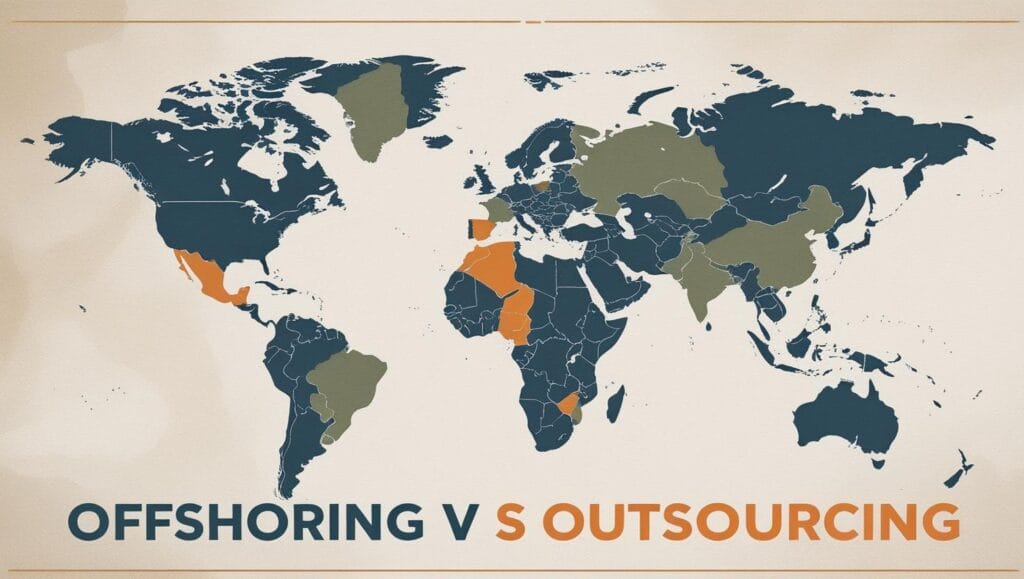What Is National Income? A Simple Guide to a Country’s Economic Health
You hear the term all the time on the news—in reports about economic growth, during election debates, and in discussions about the stock market. Commentators will say “national income is up,” and it’s meant to be good news. But what does it actually mean? What is this giant, all-important number, and how does it affect your daily life, your job, and your financial future?
In the simplest terms, national income is the total economic value of all new goods and services produced by a country over a specific period, typically one year. It represents the sum of all incomes earned by the people and businesses within that country, including wages, profits, rent, and interest. Think of it as the nation’s total paycheck before taxes—a critical report card for its economic performance.
As an economist who has spent years analyzing these figures at both the macro and micro levels, I’ve seen how easily this fundamental concept can be misunderstood. It’s not just an abstract number for academics; it’s a reflection of the combined work, innovation, and productivity of every single person in the economy. Understanding it is the first step toward understanding the economic world around you. So, let’s break it down in a way that makes sense, without the complicated jargon.
Why Should You Care About National Income?
It’s easy to dismiss national income as a high-level statistic that has no bearing on your personal finances. But its impact is far-reaching. The health of the national income directly influences:
- Job Opportunities: A growing national income means the economy is expanding. Businesses are producing more, selling more, and therefore hiring more. A rising tide really does lift many boats.
- Government Services: The taxes collected by the government (from individuals and corporations) are based on this income. A higher national income means more tax revenue to fund public services like roads, schools, national defense, and social security.
- Investment & Business Decisions: Companies use national income data to forecast demand and make decisions about expansion, investment in new factories, and product launches. The Federal Reserve uses it to help set interest rates, which directly affects your mortgage, car loan, and credit card rates.
- Standard of Living: Over the long term, a consistently growing national income is the primary driver of an improved standard of living, leading to better infrastructure, healthcare, and overall prosperity.
In essence, whether you’re an employee, a business owner, an investor, or a retiree, the trajectory of the nation’s income shapes your economic environment.
Explaining National Income: The Island Pizza Shop Economy 🍕
To make this tangible, let’s imagine a tiny, self-contained economy on an island with only one business: a pizza shop. In one year, let’s track all the money.
- Production: The shop produces and sells 1,000 pizzas at $20 each. The total value of goods produced is 1,000 x $20 = $20,000.
- Expenditure: The islanders buy all 1,000 pizzas. Their total spending on goods is $20,000.
- Income: The $20,000 in revenue for the shop doesn’t just vanish. It’s paid out as income to everyone involved:
- $10,000 in wages to the pizza makers (employees).
- $3,000 in rent to the person who owns the building (landowner).
- $2,000 in interest to the bank that provided a loan for the oven (capital provider).
- $5,000 is left over as profit for the shop owner (entrepreneur).
Notice that Production = Expenditure = Income. They are all $20,000. This is the fundamental principle: a nation’s income is equal to its output (production) and its spending. Each of these represents a different way of measuring the same economic activity. The national income of our tiny island is $20,000.
How Is National Income Actually Measured?
Economists at institutions like the U.S. Bureau of Economic Analysis (BEA) can’t just count pizzas. They have three primary methods for calculating national income, which theoretically should all yield the same result.
1. The Production (or Output) Approach
This method calculates the total value of all final goods and services produced in the country. The key word here is **”final.”** To avoid double-counting, economists only measure the market value of the finished product. For example, they count the $4 price of a loaf of bread, not the $1 value of the wheat and the $2 value of the flour used to make it. It’s about summing up the value added at each stage of production.
2. The Income Approach
This approach adds up all the incomes earned by the factors of production. It’s the method most directly related to the term “national income.” To truly understand this, it’s essential to know what are the components of national income, which are broadly categorized as:
- Compensation of Employees: All wages, salaries, and benefits paid to workers. This is the largest component in the U.S.
- Proprietors’ Income: The income of self-employed individuals and unincorporated businesses.
- Rental Income: Income earned by property owners.
- Corporate Profits: The profits of corporations before taxes.
- Net Interest: The difference between interest paid and interest received by businesses.
Summing these up (with a few adjustments) gives you the total income earned in the economy.
3. The Expenditure Approach
This is the most commonly cited method and is used to calculate the Gross Domestic Product (GDP). It measures the total amount of spending on final goods and services in the economy. The formula is:
GDP = C + I + G + (X – M)
- C (Consumption): What all of us, as households, spend on goods (cars, groceries) and services (haircuts, rent). This is the biggest driver of the U.S. economy.
- I (Investment): Spending by businesses on capital goods like machinery, equipment, and new factories. It also includes household purchases of new homes.
- G (Government Spending): Spending by all levels of government on goods and services, from military hardware to salaries for public school teachers.
- (X – M) (Net Exports): Exports (X) are goods and services we produce here and sell abroad. Imports (M) are what we buy from other countries. We subtract imports because that spending represents another country’s income.

Expert’s Bookshelf: For Deeper Understanding
“Basic Economics” by Thomas Sowell
If you want to move beyond the “what” and truly understand the “why” behind national income and other economic principles, this book is an absolute masterpiece. Sowell has a unique gift for explaining complex ideas in clear, common-sense language without any jargon or equations. I recommend this to anyone, from students to CEOs, who wants a solid foundation in how economies actually work in the real world.
Check it Out on AmazonImportant Relatives: GDP, GNP, and NNP
You’ll often hear other acronyms used alongside national income. They are all related but measure slightly different things.
Key Economic Indicators
- Gross Domestic Product (GDP): The total value of goods and services produced **within a country’s borders**, regardless of who owns the company. A Toyota factory in Kentucky contributes to U.S. GDP. This is the most widely used measure of a country’s economic output.
- Gross National Product (GNP): The total value of goods and services produced by a **country’s residents**, no matter where in the world they are. An American-owned Ford factory in Mexico contributes to U.S. GNP, but not U.S. GDP.
- Net National Product (NNP): This is GNP minus **depreciation**. Depreciation is the wear and tear on a country’s capital goods (machines breaking down, buildings getting old). NNP gives a more realistic picture of the sustainable income, as it accounts for the cost of maintaining the country’s productive capacity. National Income is very closely related to NNP.
The Limitations: What National Income Doesn’t Tell Us
For all its importance, national income is not a perfect measure of a country’s well-being. Acknowledging its limitations is key to a sophisticated understanding of economics.
- It Ignores Non-Market Transactions: A parent staying home to raise a child, a volunteer at a soup kitchen, or you mowing your own lawn—all of this is valuable work, but because no money changes hands, it’s not counted in national income.
- It Doesn’t Measure Inequality: A country can have a very high national income, but if most of it is concentrated in the hands of a tiny fraction of the population, the average citizen may not be well-off. It’s a measure of the size of the economic pie, not how the slices are distributed.
- It Doesn’t Account for Quality of Life: National income could increase due to building a new prison or cleaning up after a natural disaster. These activities add to GDP but don’t necessarily make us “better off.” It also ignores factors like leisure time, environmental quality, and public safety.
- The “Black Market” is Missing: All underground economic activity, from undeclared tips to illegal transactions, is not captured in official figures.
Despite these flaws, national income accounting remains the most comprehensive and consistent tool we have for assessing the health and trajectory of an economy. It provides the essential data that allows us to have meaningful conversations about economic policy, growth, and the future.
So, the next time you hear a report about the nation’s income, you’ll know exactly what they’re talking about: the grand sum of a nation’s work, creativity, and economic vitality, all captured in one powerful number.


